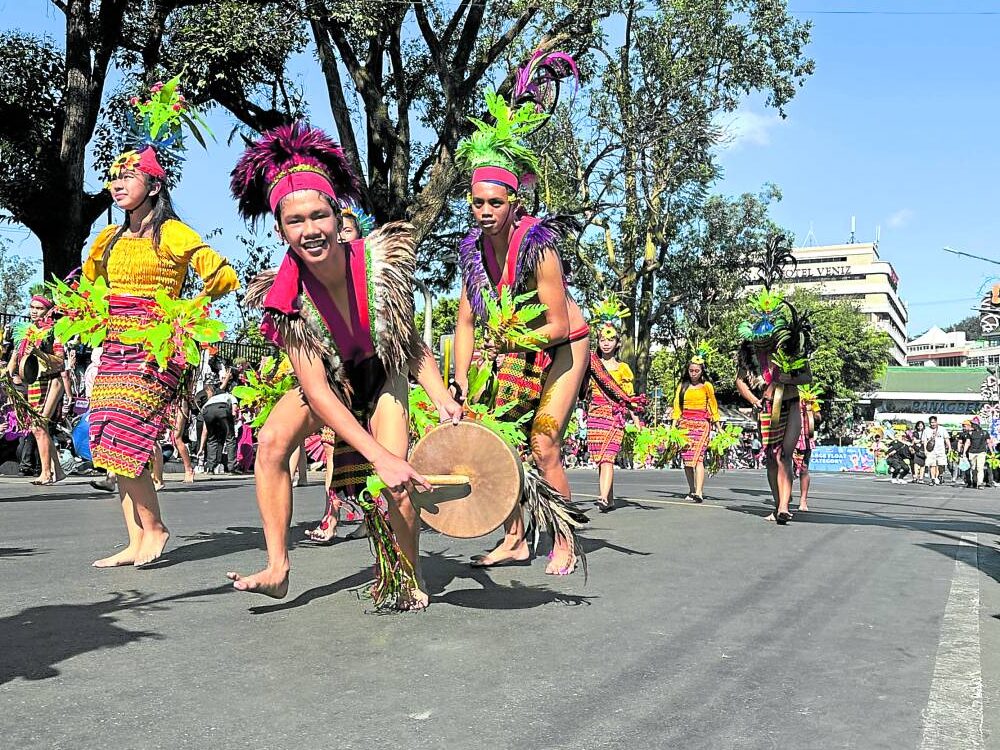Panagbenga 2024 was an opportunity to reconnect with Baguio. I was there from Feb. 23 to 25, the same weekend the grand street dance and floral float parades occurred.
The last time I had been there was July 2022 and, since then, a busy schedule prevented me from visiting as frequently as I would want. Memories of college life and the upland chill do offer timeless comfort.
Between 2008 and 2012, I was a student based in Baguio. Before this comeback, I last witnessed the concluding parades of Panagbenga in 2012—an overcapacity that, to my mind, resulted in gridlocks and distress. Postpandemic, the crowd is fewer and tamer, and the events more organized. That led me to see how the festival highlights the very best of Baguio.
READ: Baguio in focus
Fast and slow options
The weather isn’t the only thing I enjoy in Baguio. In college, I lived in the sleepy outskirts of Baguio and would stay at friends’ homes whenever I wanted more action.
That ability to access the fast and slow lives in just one city was refreshed in my memory, staying for two nights at The Manor at Camp John Hay, and eating out at the nearby Forest Lodge and Baguio Country Club (all three remind you of the American influence on the city).
Bed-and-breakfasts and other types of accommodations have mushroomed all over and, generally, it gets quieter the farther you are from the city. But it’s easy to get to the night market, the mall, among others. Even when the demand is high, the taxi drivers remain honest.
Cultural diversity
The mighty fit Igorots at the beginning of the float parade were not there in 2012, but their unfailing social media virality has probably turned them into a fixture.
It’s easy to fixate on the abs but, if you observe what they wear, you find out that they represent various ethnic groups that chose to be collectively called “Igorot.” Being the capital of the Cordillera Region, the city ought to remind the public of their existence. As visitors, we ought to know more about the diversity—and spots aplenty celebrate that.
Mural depicts the cultural diversity of Baguio. It is recognized by UNESCO as a creative city. (photos by Vaughn Alviar)
Try looking for etag at the public market; ordering pinikpikan at some hole-in-the-wall; and learning about the region’s textiles at Museo Cordillera. One evening, I found out that a drag bar, The Hive Bar, opened in the city. I went there to find drag performers, mostly from North Luzon. It reminded me that other cultures and subcultures do exist in this melting pot, and are waiting to be discovered.
Street-smart options
Friends expect pasalubong when you go to Baguio. That’s because the locals have done such a great job originating products and experiences that are authentically Baguio—or branding them as such.
That’s all part of an effort to rise from the rubble of the 1990 killer earthquake. The barrel man, the strawberry and ube jams, certain vegetables, the flowers that Panagbenga celebrates—heck, even the ukay-ukay is now associated with the city.
A slice of strawberry accompanies the cheesecake flan at Bistro by Hill Station. The strawberry has become synonymous with Baguio.
That image rehabilitation project has led to economic vibrancy and abundance of options that one can capitalize on only with street smarts. For this and many other visits, I had to capitalize on it to access what I endured since my college days and what have changed.
In Baguio, you have the power to build your own adventure.
Le Chef is part of The Manor at Camp John Hay, a place that celebrates its American hill station charm.
